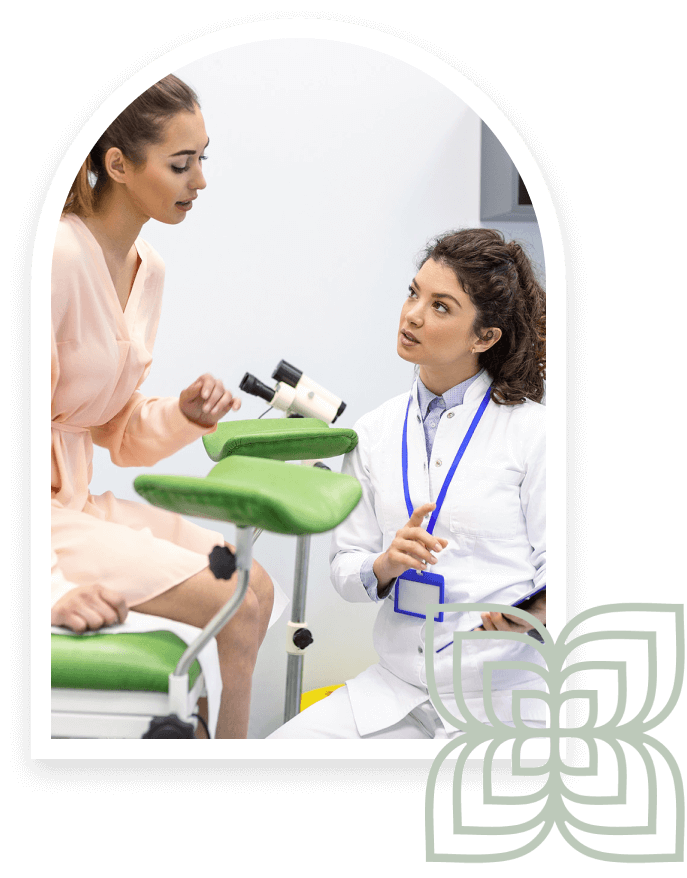Mirena Insertion and Removal
If you’re considering Mirena insertion for long-term contraception, you may have questions about the procedure and what to expect afterward. Here we’ll detail each step, ensuring you’re informed, prepared, and ready for the most positive experience possible with this effective birth control option. Patients from Hoppers Crossing and the surrounding areas of west Melbourne visit us for Mirena GP services.
Understanding Mirena: A hormonal IUD for long-term contraception
Mirena is a hormonal intrauterine device (IUD) that releases levonorgestrel, a form of progesterone. Its primary function is to create an environment within your uterus that is not conducive for pregnancy. It does this by changing the lining of the uterus and thickening the fluid around the cervix, preventing sperm from entering. Mirena is am effective and reversible form of contraception that does not negatively impact fertility.
Did you know that Mirena is also suitable for:
Women who haven’t had children
Women who want long-term contraception
Women who want a reversible contraceptive option
Women who want to reduce heavy menstrual bleeding
Women who want to reduce menstrual pain
Mirena serves additional benefits beyond contraception, unlike the copper IUD which primarily focuses on preventing pregnancy.
Kyleena and Copper are additional types of intrauterine devices (IUD’s).


Understanding Mirena: A hormonal IUD for long-term contraception
Mirena is a hormonal intrauterine device (IUD) that releases levonorgestrel, a form of progesterone. Its primary function is to create an environment within your uterus that is not conducive for pregnancy. It does this by changing the lining of the uterus and thickening the fluid around the cervix, preventing sperm from entering. Mirena is am effective and reversible form of contraception that does not negatively impact fertility. Did you know that Mirena is also suitable for:
Women who haven’t had children
Women who want long-term contraception
Women who want a reversible contraceptive option
Women who want to reduce heavy menstrual bleeding
Women who want to reduce menstrual pain
Mirena serves additional benefits beyond contraception, unlike the copper IUD which primarily focuses on preventing pregnancy.
Kyleena and Copper are additional types of intrauterine devices (IUD’s).

Preparing for Your Mirena Insertion
Just like any other medical procedure, preparation is key to ensure a smooth Mirena insertion process. From timing your appointment to how to spend your day afterwards, every detail counts.
Timing Your Appointment
When should you schedule your Mirena insertion? You can do this at anytime during your menstrual cycle.
Pre-Insertion Consultation
Before your Mirena insertion, you’ll have an initial consultation to determine whether an IUD is an appropriate treatment for you. During the appointment, your GP will ensure you understand the process, risks, and side effects. This is an essential step in the process. It helps you make an informed decision and prepares you for what to expect during and after the insertion.
Script for the Mirena IUD
You’ll receive a script for the IUD, and you’ll need to purchase it from your local pharmacy and bring it to your Mirena insertion appointment.

The Mirena Insertion Process
Plan to be at the clinic for approximately 1 hour.
The procedure for Mirena IUD insertion is straightforward, involving the insertion of the IUD through the cervix. Your GP is trained to make this process as smooth and comfortable as possible. After the procedure, patients are advised to remain in the clinic for a period
of observation.
Ensuring your comfort during the Mirena insertion is a top priority. Discuss pain relief options with your GP if you are concerned.
We recommend taking the remainder of the day to rest after your procedure, and to resume usual activities in 2-7 days, depending on how your body responds.
Aftercare Advice
After the Mirena insertion, you’ll need to take some precautions to minimise the risk of infection. For at least 2 days, you should avoid:
- Using tampons (pads are okay if you have bleeding)
- Having sexual intercourse
- Baths, swimming or using spas (shower is okay)
Light bleeding, pain, and dizziness are common immediate side effects following Mirena insertion, but these symptoms should subside within a few days.
What to Expect After Insertion
Once Mirena is safely in your uterus, you may notice changes in your menstrual bleeding patterns. Spotting or irregular bleeding during the initial 6 months is normal, and over time, your periods may become:
Lighter
Shorter
Less painful
May stop completely
However, there are potential side effects. Some common side effects after Mirena insertion include:
Menstrual changes / irregular bleeding
Abdominal or pelvic pain
Headache
Genital discharge
Mood changes
The good news is, some of these side effects, like headaches, breast tenderness, and irregular bleeding, may improve after the first three months. Remember, it takes approximately one week after insertion for Mirena to become an effective contraceptive, so it’s advisable to use alternative contraception during this period.


When to Seek Medical Attention
Like any medical procedure, Mirena insertion has potential complications that may require medical attention. Your GP will explain serious symptoms to watch out for. If you experience any complications, seek immediate medical attention.
IUD Follow-Up Care and Check-Ups
Regular follow-up care and check-ups are part of life with Mirena. A follow-up check around 4 to 6 weeks after Mirena insertion is recommended to ensure proper IUD placement and to assess for any signs of infection. After the check-up, it’s advised to perform a monthly self-check of the IUD strings in the vagina to ensure the device has not become displaced.
Not only do these routine follow-ups provide an opportunity to address any concerns, they also improve the likelihood of using Mirena effectively and for a longer duration. If there are any issues or concerns during subsequent check-ups, an ultrasound might be conducted to verify the Mirena IUD is positioned accurately within the uterus, ensuring there are no uterine abnormalities affecting its placement.
Considering Mirena Removal
After a while, you might consider having your Mirena IUD removed. Whether it’s because you’re planning for a baby, are experiencing lingering side effects or want to switch to a different contraceptive method, there are some things you should consider before the removal.
Transitioning to Other Contraceptives
If you’re planning to switch to another contraceptive after Mirena removal, you need to take some precautions to avoid unintended pregnancy. It’s crucial to overlap the old and new methods or use a barrier method like condoms or spermicide for the first seven days to maintain contraceptive effectiveness.
When transitioning from Mirena to another contraceptive, it’s essential to prevent gaps in contraception. For certain contraceptive transitions, an overlap period of seven days with the new contraceptive method is recommended due to the immediate return to fertility after IUD removal. If you’re unsure, it’s always best to consult your GP for advice.

Frequently Asked Questions


